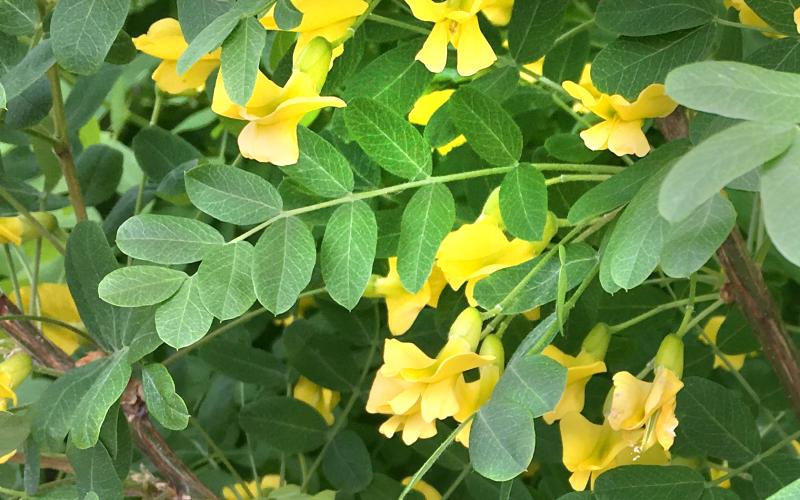Common name: Siberian peashrub
Scientific name: Caragana arborescens
Synonyms: Caragana
Legal status
Propagation and sale of this plant are prohibited in Minnesota. Transportation is only allowed when in compliance with Minnesota Statute 18.82. Although Restricted Noxious Weeds are not required to be controlled or eradicated by law, landowners are strongly encouraged to manage these invasive plants on their properties to reduce spread into new areas. Exemption for Green Spires ® Caragana - Caragana 'Jefarb'.
Background
Siberian peashrub can be found in shelterbelts, wildlife plantings, and commonly as a hedgerow. It is very adaptable to many environmental conditions and has been used for erosion control as the plants have an extensive root system. Each plant is self-compatible meaning that it can reproduce by itself and begin a new infestation.
Description
- Siberian peashrub grows as a large shrub or small tree up to 18 feet tall and has alternate, compound leaves 3-5 inches long which lack a terminal leaflet.
- Stipules at the base of the leaf can be stiff and sharp.
- Yellow flowers bloom in May and June then produce 1-2 inch long seed pods that are green in summer then brown, curl, open, and release seed in fall.
- There are approximately six seeds per pod.
Habitat
Adaptable to many growing conditions. Prefers sun but will grow in shade. Found naturalizing in woodland edges, savannas, and distributed grasslands.
Means of spread and distribution
It produces large amounts of viable seed. Seeds are dispersed by birds and animals. Plants resprout if cut. It has been planted for shelterbelts and windrows and can be grown in USDA zone 2.
Impact
Siberian peashrub spreads in forest understories, savannas, and edge habitats. It is adapted to many soil conditions including salt and poor soils. It is also a nitrogen fixing species that can alter soil conditions, as well as properties that can be allelopathic to other plants.
Prevention and management
- Do not plant Siberian peashrub.
- Small plants can be hand pulled or mowed.
- Burning may be effective for killing seedlings but will not kill mature plants.
- Foliar, stump cut, or basal bark herbicide treatments may be effective. Herbicides applied to the stems or cut stumps spread into the root system and provide better control. In large, dense infestations with little else growing, foliar applications of herbicide can be effective. When using herbicide treatments, always check with your local University of Minnesota Extension Agent, co-op, or certified landscape care expert for assistance and recommendations. There are several businesses throughout the state with certified herbicide applicators that can be hired to perform chemical applications.


